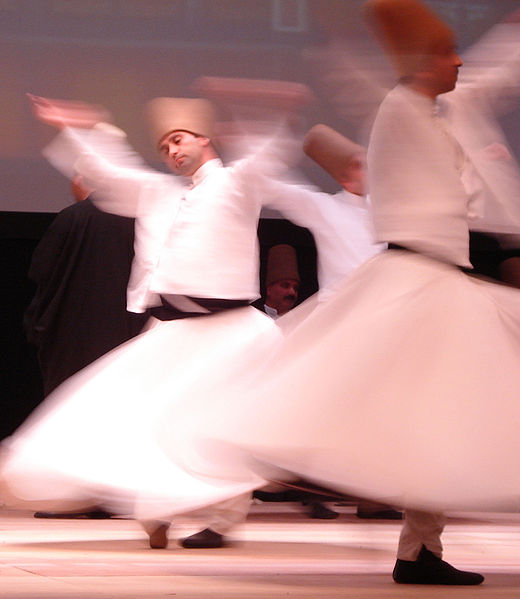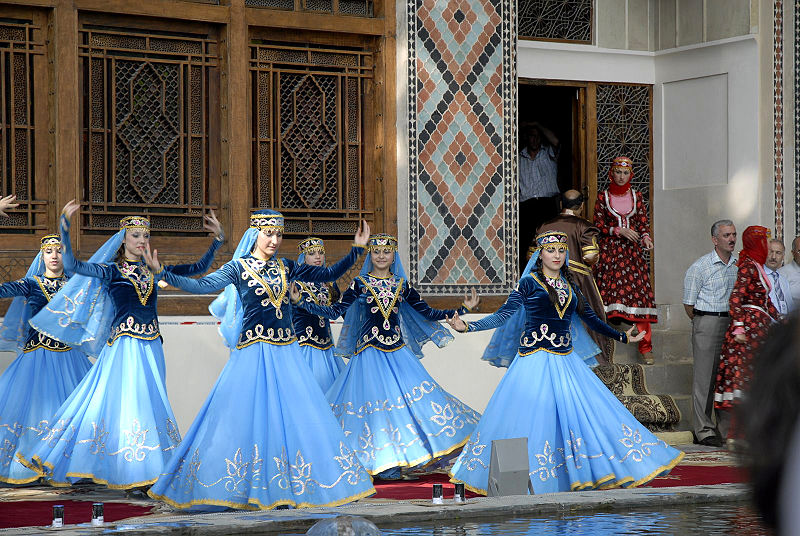

The Mevlevi Whirling Dervishes
Audiovisual media can at times offer a view of movement that may evoke in us a wondrous response. Often unanticipated, a hint of something other or a contact through communal rhythm with another level, sometimes lasting but a few seconds, can leave a strong impression that remains long after the rest of the film has maybe been forgotten.
Each time I return to view the adaptation of William Blatty’s The Exorcist, the working rhythm of the blacksmiths in the opening scenes helps focus my attention. I recall the slow wedding procession of the kitsune (http://en.wikipedia.org/wiki/Kitsune) in Akira Kurosawa’s Dreams and the vertical descent of Antonio Vargas in Strictly Ballroom as he presents the pose of a bullfighter in the Paso Doble. There are the all-too-brief celebratory dance movements of the Native Americans in Kevin Costner’s Dances With Wolves and of the tribal dancers in Caroline Link’s Nowhere in Africa. I was enthralled by the roller skaters in Michael Cimino’s Heaven’s Gate—such joyful simplicity and so unexpected. There is the evocative whisper of Maori rhythm as the men row out to sea towards the end of Jane Campion’s The Piano. There is the traditional warrior postural movement of Rawiri Paratene and Grant Roa in Niki Caro’s Whale Rider.
I often recall the rare film footage of traditional central Asian dances in V. I. Pudovkin’s last silent film, Storm Over Asia, and the beautiful dancing of a Cossack woman in From the Pole to the Equator, a documentary drawing on the archives of Luca Comerio (1874–1940), a pioneer of Italian cinema. But how much more focused is the art portrayed, the effort of attention sustained, in films such as Peter Brooks’ Meetings With Remarkable Men or National Geographic’s Living Treasures of Japan.
While viewing Storm Over Asia and From The Pole To The Equator, there was an understanding that what I saw was a record from a time and a way of living now gone. As a result, there was distance and a sense of mournful loss between the search for my place now and what was seen. The brief movements and dances in the earlier mentioned films were not central to their composition, structure, or the stories related, nor were they intended to be. Although offering depth they were secondary, appearing momentarily.
I purchased Living Treasures on a hunch and was not disappointed. It is a record of a group of men and women who maintain centuries-old Japanese arts; they are honored as “Holders of Important Intangible Cultural Properties” or, more popularly, “Living National Treasures”. The film reveals scattered vestiges of surviving excellence and bestirs us to try to understand the effort necessary to attain such quality. I was astounded as the masterly movement issuing through a Bunraku puppet elicited the feeling of jealousy while simultaneously allowing me to be free of such strong emotion. The film is celebratory; nonetheless, as I watched it, I sensed that the world of the “Treasures” was now in the twilight of its life, and it would be illusory to think that I could participate in it.
I first viewed Meetings With Remarkable Men in 1981, and during that viewing two parts of the film stood out for me: hearing the resonance of the Ney played by Kudsi Erguner (http://en.wikipedia.org/wiki/Kudsi_Erguner) and experiencing the final twenty minutes when the seeker, reaching the place where his search both ended and began, moved me to awe and hopefulness for our future here on the frontier of creation. In both the latter films one senses a real effort of payment. As Yoshido Tam, a master of Bunraku, stated, “To surpass your master pays the debt of what he gave you.”

An Azeri Dance from Azerbaijan